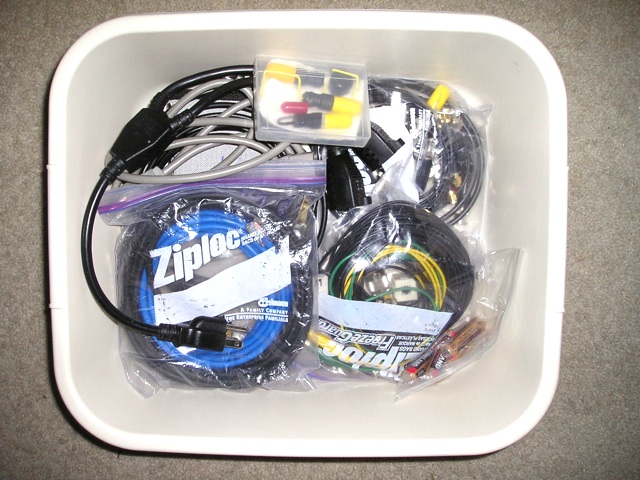
Figure 1. Plastic Bin With Cables and Other Tech Hardware
Abstract: Engineers and
technicians who must travel with technical hardware know that having such hardware in carry-on luggge can slow down the airport
experience significantly. A tip is described that can significantly
speed progress through the airport screening line.
Discussion: Figure 1 shows a
plastic bin with a number of cables, connectors, and other electrical
hardware mostly contained in plastic bags. On most of my
airline travel, I usually have to carry a lot of technical
hardware for my seminars or consulting work. In the past, I just packed
the various pieces in my Pelican case roll-aboard and in my
computer bag. A problem occurs because I have so much of this hardware
that the security screeners at the airport security checkpoint cannot get a clear
picture on the x-ray and want to open the bags and remove all the
contents. Needless to say, this can cause a significant delay. I have
experienced delays as much as 45 minutes, a lot of that time repacking
the bags from scratch.
One way to speed the airport experience is to pack as much of the hardware as possible in plastic bags, quart and gallon size. I put the plastic bags in my luggage in a way that is easy to access, such as in the slots of my computer bag (the computer is actually inside my Pelican case). I remove enough, although not necessarily all, of the hardware and put it in one of the plastic bins available at the security checkpoint so a clear x-ray picture can be taken of my bags. The bin is positioned on the x-ray machine belt in front of the bag(s) from which the material was taken. Often the screener will look through the bin carefully. I have had security screeners thank me for doing this as it makes their job easier and minimizes the delay for others in line. And minimizing problems at the airport is a good thing.
Over the years I have gone from being stopped to have my bags inspected almost every time to only a small fraction of the time. This technique is one of the things I have learned that help improve the airport experience.
One way to speed the airport experience is to pack as much of the hardware as possible in plastic bags, quart and gallon size. I put the plastic bags in my luggage in a way that is easy to access, such as in the slots of my computer bag (the computer is actually inside my Pelican case). I remove enough, although not necessarily all, of the hardware and put it in one of the plastic bins available at the security checkpoint so a clear x-ray picture can be taken of my bags. The bin is positioned on the x-ray machine belt in front of the bag(s) from which the material was taken. Often the screener will look through the bin carefully. I have had security screeners thank me for doing this as it makes their job easier and minimizes the delay for others in line. And minimizing problems at the airport is a good thing.
Over the years I have gone from being stopped to have my bags inspected almost every time to only a small fraction of the time. This technique is one of the things I have learned that help improve the airport experience.
Summary:
Engineers and technicians who must travel with technical hardware can
speed their airport check-in process by putting cables and other small
pieces of hardware in plastic bags and placing them in a bin by
themselves.
Need help with a design or additional training on technical subjects? Click on the image below to go to CircuitAdvisor.com, a new engineering resource for training, news, and fun.
If you like the information in this article and others on this website,
much more information is available in my courses. Click here
to see a listing of upcoming courses on design, measurement, and
troubleshooting of chips, circuits, and systems. Click here to see upcoming seminars in Newport Beach, CA.
Click here for a description of my latest seminar titled (now also available online as a WebEx seminar):
EMC
Lab Techniques for Designers
(How to find EMC problems and have some confidence your system will pass EMC testing while it is still in your lab).
(How to find EMC problems and have some confidence your system will pass EMC testing while it is still in your lab).
Home

